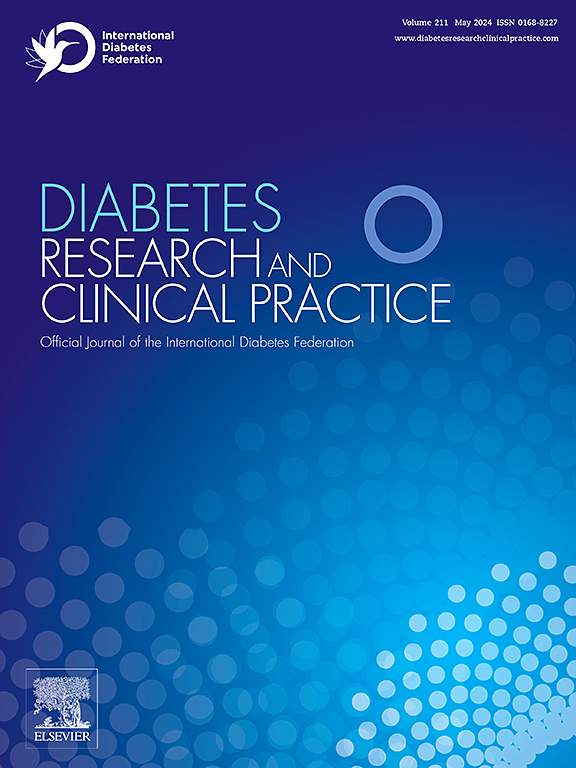Association between different triglyceride glucose index-related indicators and overactive bladder
IF 6.1
3区 医学
Q1 ENDOCRINOLOGY & METABOLISM
引用次数: 0
Abstract
Background
Overactive bladder (OAB) is a syndrome marked by urinary urgency. Given the crucial role of metabolic anomalies in the pathogenesis of OAB, the aim of this study was to investigate the associations between different triglyceride glucose index (TyG)-related indicators and OAB.
Methods
9024 participants aged ≥ 20 years from NHANES 2005–2018 were involved. Weighted multivariate logistic regression was employed to assess the relationship between three TyG-related indicators and OAB with subgroup and interaction analyses. In addition, ROC, DeLong’s test and confusion matrix were further utilized to assess the predictive power of different indicators for OAB in the total population versus different subgroups of the population.
Results
TyG-related indicators were positively associated with OAB. The associations were statistically different in age and physical activity subgroups (all p for interaction < 0.1). In the whole population, TyG-WHtR demonstrated the highest predictive ability, with the largest AUC of 0.625 (95 %CI: 0.609, 0.641), and was relatively more predictive in the < 60 years and moderate-to-vigorous physical activity subgroups.
Conclusions
Positive associations of TyG-related indicators with OAB were observed. TyG-WHtR has the strongest predictive performance for OAB in the total population.
求助全文
约1分钟内获得全文
求助全文
来源期刊

Diabetes research and clinical practice
医学-内分泌学与代谢
CiteScore
10.30
自引率
3.90%
发文量
862
审稿时长
32 days
期刊介绍:
Diabetes Research and Clinical Practice is an international journal for health-care providers and clinically oriented researchers that publishes high-quality original research articles and expert reviews in diabetes and related areas. The role of the journal is to provide a venue for dissemination of knowledge and discussion of topics related to diabetes clinical research and patient care. Topics of focus include translational science, genetics, immunology, nutrition, psychosocial research, epidemiology, prevention, socio-economic research, complications, new treatments, technologies and therapy.
 求助内容:
求助内容: 应助结果提醒方式:
应助结果提醒方式:


